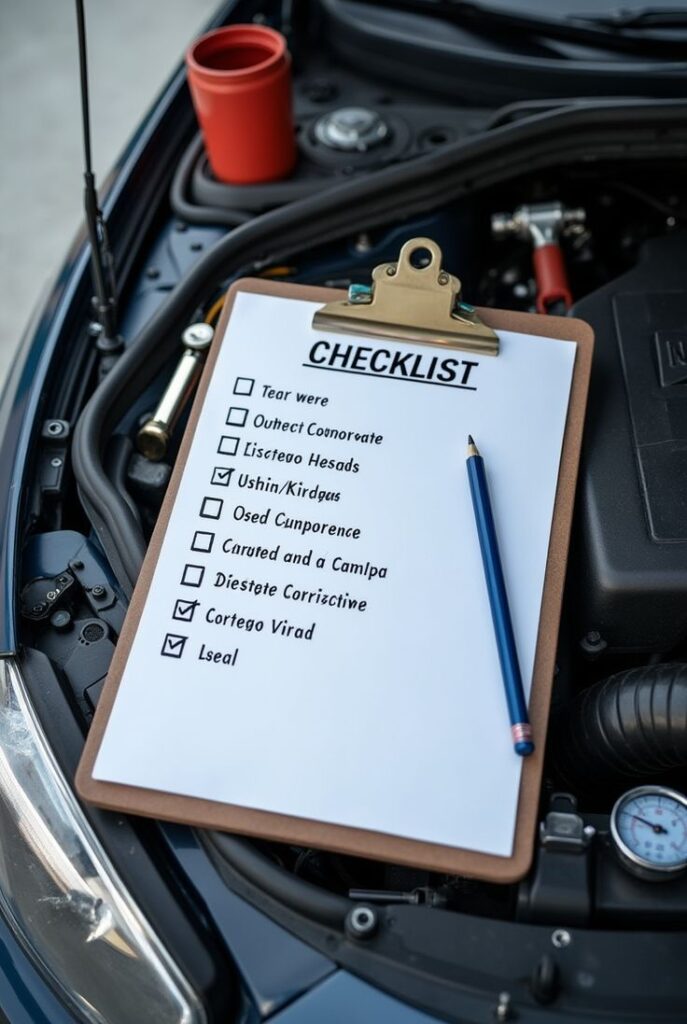
Owning a car is a significant investment, and just like any investment, it requires regular upkeep to maintain its value and performance. This is where preventative maintenance schedules come into play. Understanding and adhering to your car’s maintenance schedule, outlined in your owner’s manual, is crucial for preventing costly repairs and extending the lifespan of your vehicle.
1. The Owner’s Manual: Your Maintenance Guide
- Comprehensive Information: Your owner’s manual is the definitive source for your vehicle’s specific maintenance requirements. It provides detailed information on recommended service intervals, fluid types, and inspection procedures.
- Tailored to Your Vehicle: Maintenance schedules vary depending on the make, model, and year of your vehicle. The owner’s manual provides a schedule tailored to your specific car.
- Driving Conditions: The manual often includes separate schedules for “normal” and “severe” driving conditions. Severe conditions, such as frequent stop-and-go traffic, towing, or driving in extreme temperatures, require more frequent maintenance.
2. Understanding the Maintenance Schedule:
- Service Intervals: The schedule outlines recommended service intervals, typically based on mileage or time.
- Key Maintenance Tasks:
- Oil Changes: Regular oil and filter changes are essential for engine lubrication and protection.
- Fluid Checks and Changes: Checking and changing fluids, such as coolant, brake fluid, power steering fluid, and transmission fluid, is crucial for system performance.
- Filter Replacements: Replacing air filters (engine and cabin), fuel filters, and other filters ensures proper airflow and filtration.
- Belt and Hose Inspections: Inspecting belts and hoses for wear and damage prevents unexpected failures.
- Tire Rotations and Inspections: Rotating tires and inspecting for wear ensures even tire wear and safe handling.
- Brake Inspections: Inspecting brake pads, rotors, and calipers ensures reliable braking performance.
- Suspension and Steering Checks: Inspecting suspension and steering components ensures proper handling and ride comfort.
- Spark Plug Replacement: Replacing spark plugs at recommended intervals ensures proper engine ignition.
- Timing Belt/Chain Service: Replacing the timing belt or chain at recommended intervals prevents catastrophic engine damage.
- Inspection Procedures: The manual also outlines inspection procedures for various components, allowing you to identify potential problems early.
3. The Benefits of Sticking to the Schedule:
- Preventing Costly Repairs: Regular maintenance can prevent minor issues from escalating into major, expensive repairs.
- Extending Vehicle Lifespan: Proper maintenance can significantly extend the lifespan of your vehicle.
- Maintaining Optimal Performance: Regular service ensures your vehicle operates at peak performance and fuel efficiency.
- Ensuring Safety: Properly maintained brakes, tires, and other safety components are crucial for safe driving.
- Maintaining Resale Value: A well-maintained vehicle with a documented service history retains its resale value better.
- Peace of Mind: Knowing your vehicle is properly maintained provides peace of mind and reduces the risk of unexpected breakdowns.
4. Creating a Maintenance Routine:
- Record Keeping: Keep a record of all maintenance performed on your vehicle.
- Scheduling Reminders: Set reminders for upcoming maintenance tasks.
- Professional Service: Consider having your vehicle serviced by a qualified mechanic.
- DIY Maintenance: If you are comfortable with basic automotive maintenance, you can perform some tasks yourself.
- Regular Inspections: Perform regular visual inspections of your vehicle’s components.
5. Don’t Ignore Warning Signs:
- Check Engine Light: If the check engine light illuminates, have your vehicle inspected promptly.
- Unusual Noises or Vibrations: Investigate any unusual noises or vibrations from your vehicle.
- Fluid Leaks: Address any fluid leaks immediately.
- Reduced Performance: If you notice a reduction in your vehicle’s performance, have it inspected.
By understanding and adhering to your vehicle’s preventative maintenance schedule, you can ensure a reliable, safe, and long-lasting driving experience.